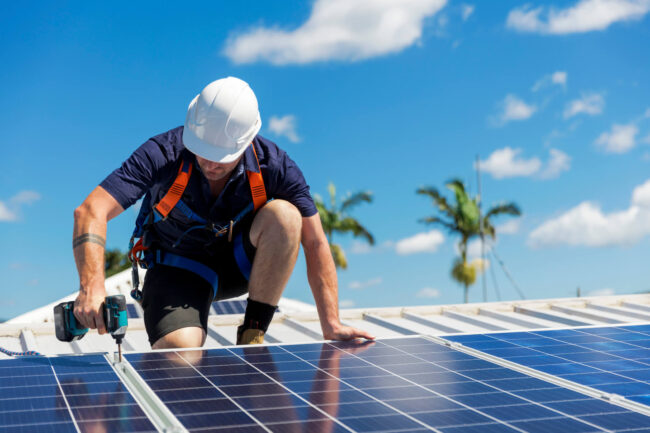Empowering Communities Through Mass Solar Panel Installations
Selecting the optimal location for solar panel placement on your roof is a crucial aspect of maximizing energy production and ensuring the efficiency of your solar energy system. These professional solar pv installers will explore the key considerations for finding the ideal location for solar panels on your residential roof.
The orientation of your roof plays a significant role in harnessing sunlight for solar energy production. In the Northern Hemisphere, south-facing roofs receive the most sunlight throughout the day, making them the ideal choice for solar panel placement. However, east and west-facing roofs can also be viable options, albeit with slightly reduced efficiency.
The tilt of your roof, also known as the roof pitch, influences the exposure of solar panels to sunlight. The optimal tilt angle varies depending on your geographical location. A general rule of thumb is to match the tilt angle to your latitude. However, modern solar panel mounting systems are adjustable, allowing for customization to maximize energy production.
Shading can significantly impact the performance of solar panels. It’s essential to assess potential shading from nearby trees, buildings, or other structures. Even small amounts of shading during certain times of the day can reduce the overall efficiency of the solar energy system. Trimming trees or adjusting the panel layout to minimize shading is crucial for optimal performance.

Assess your roof for any obstructions that might interfere with solar panel placement. Ventilation systems, chimneys, and skylights should be considered when planning the layout of your solar panels. A clear and unobstructed space ensures that the solar panels can capture as much sunlight as possible.
Understanding the local climate and weather patterns is essential for predicting sunlight exposure. Cloud cover, rain, and other weather conditions can impact solar panel performance. While some weather variations are beyond your control, considering these factors during the planning stage helps set realistic expectations for energy production.
Before finalizing the location of your solar panels, ensure compliance with local regulations and homeowner association rules. Some areas may have specific guidelines regarding the visibility of solar panels from the street or neighboring properties. Being aware of and adhering to these regulations avoids potential issues in the future.
Consider the possibility of future expansion when determining the location of your solar panels. If space allows, leaving room for additional panels in the future can help increase your energy production as your energy needs evolve.
In conclusion, finding the ideal location for solar panel placement on your roof involves a thoughtful assessment of roof orientation, tilt, shading, roof obstructions, local climate, regulatory compliance, and potential for future expansion. By carefully considering these factors, you can optimize your solar energy system to harness the maximum amount of sunlight and enjoy the long-term benefits of clean and sustainable energy.
